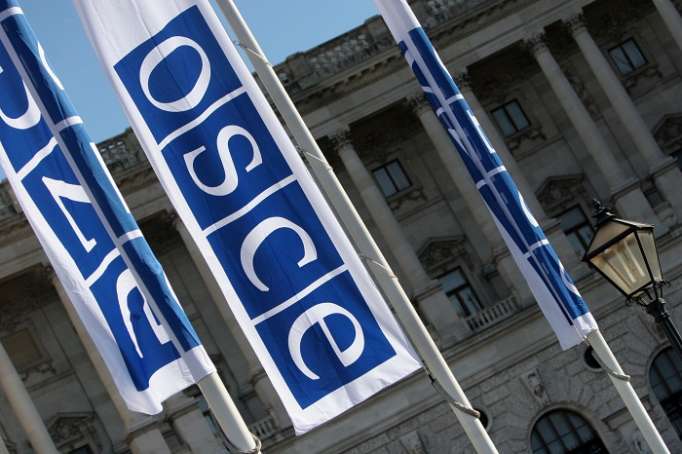The meeting will be held today, Sept. 29 on 17:00 CET. Personal Representative of the OSCE Chairperson-in-Office on the conflict dealt with by the OSCE Minsk Conference Andrzej Kasprzyk will update the Permanent Council on developments.
Armenian armed forces launched a large-scale military attack on positions of the Azerbaijani army on the front line, using large-caliber weapons, mortars, and artillery on Sept. 27.
Azerbaijan responded with a counter-offensive along the entire front. As a result of retaliation, Azerbaijani troops managed to liberate the territories previously occupied by Armenia: Garakhanbeyli, Garvend, Kend Horadiz, Yukhari, Ashagi Abdulrahmanli villages (Fuzuli district), Boyuk Marjanli, and Nuzgar villages (Jabrayil district).
Moreover, the positions of the Armenian armed forces were destroyed in the direction of Azerbaijan's Agdere district and Murovdag, important heights were taken under control.
Military actions continued on Sept. 29. Azerbaijani army was able to destroy several tanks of the Armenian Armed Forces, as well as several key military facilities.
Azerbaijan's Dashkesan district underwent fire on the same day from the opposing forces, while Azerbaijani Armed Forces continued military actions on Sept. 29 to liberate the city of Fuzuli from occupation.
Back in July 2020, the Armenian Armed Forces violated the ceasefire in the direction of Azerbaijan's Tovuz district. As a result of Azerbaijan's retaliation, the opposing forces were silenced. The fighting continued the following days as well. Azerbaijan lost a number of military personnel members, who died fighting off the attacks of the Armenian armed forces.
The conflict between the two South Caucasus countries began in 1988 when Armenia made territorial claims against Azerbaijan. As a result of the ensuing war, Armenian armed forces occupied 20 percent of Azerbaijan, including the Nagorno-Karabakh region and seven surrounding districts.
The 1994 ceasefire agreement was followed by peace negotiations. Armenia has not yet implemented four UN Security Council resolutions on the withdrawal of its armed forces from Nagorno Karabakh and the surrounding districts.
More about: #OSCE
















































